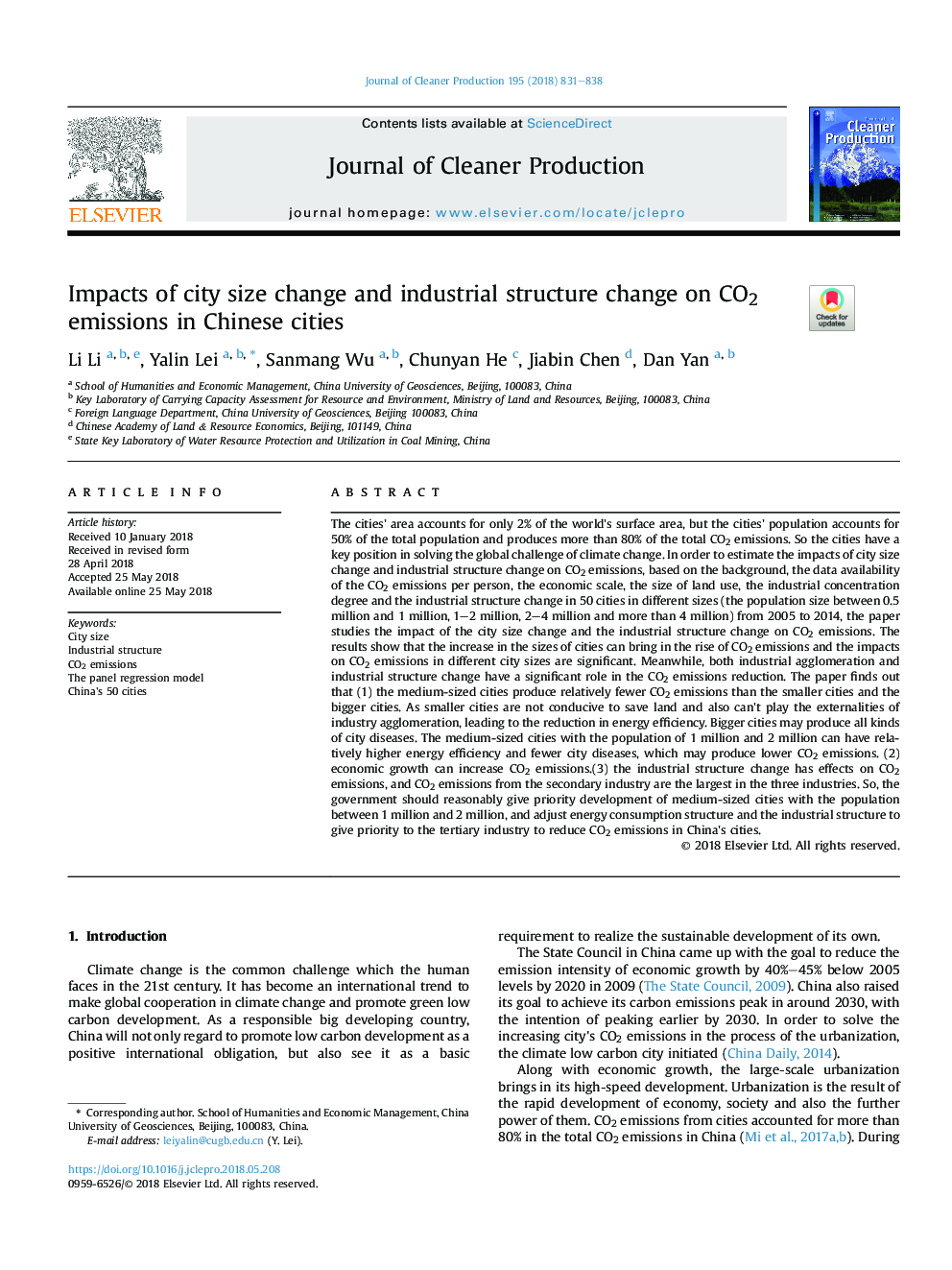| کد مقاله | کد نشریه | سال انتشار | مقاله انگلیسی | نسخه تمام متن |
|---|---|---|---|---|
| 8094279 | 1522058 | 2018 | 8 صفحه PDF | دانلود رایگان |
عنوان انگلیسی مقاله ISI
Impacts of city size change and industrial structure change on CO2 emissions in Chinese cities
دانلود مقاله + سفارش ترجمه
دانلود مقاله ISI انگلیسی
رایگان برای ایرانیان
موضوعات مرتبط
مهندسی و علوم پایه
مهندسی انرژی
انرژی های تجدید پذیر، توسعه پایدار و محیط زیست
پیش نمایش صفحه اول مقاله

چکیده انگلیسی
The cities' area accounts for only 2% of the world's surface area, but the cities' population accounts for 50% of the total population and produces more than 80% of the total CO2 emissions. So the cities have a key position in solving the global challenge of climate change. In order to estimate the impacts of city size change and industrial structure change on CO2 emissions, based on the background, the data availability of the CO2 emissions per person, the economic scale, the size of land use, the industrial concentration degree and the industrial structure change in 50 cities in different sizes (the population size between 0.5 million and 1 million, 1-2 million, 2-4 million and more than 4 million) from 2005 to 2014, the paper studies the impact of the city size change and the industrial structure change on CO2 emissions. The results show that the increase in the sizes of cities can bring in the rise of CO2 emissions and the impacts on CO2 emissions in different city sizes are significant. Meanwhile, both industrial agglomeration and industrial structure change have a significant role in the CO2 emissions reduction. The paper finds out that (1) the medium-sized cities produce relatively fewer CO2 emissions than the smaller cities and the bigger cities. As smaller cities are not conducive to save land and also can't play the externalities of industry agglomeration, leading to the reduction in energy efficiency. Bigger cities may produce all kinds of city diseases. The medium-sized cities with the population of 1 million and 2 million can have relatively higher energy efficiency and fewer city diseases, which may produce lower CO2 emissions. (2) economic growth can increase CO2 emissions.(3) the industrial structure change has effects on CO2 emissions, and CO2 emissions from the secondary industry are the largest in the three industries. So, the government should reasonably give priority development of medium-sized cities with the population between 1 million and 2 million, and adjust energy consumption structure and the industrial structure to give priority to the tertiary industry to reduce CO2 emissions in China's cities.
ناشر
Database: Elsevier - ScienceDirect (ساینس دایرکت)
Journal: Journal of Cleaner Production - Volume 195, 10 September 2018, Pages 831-838
Journal: Journal of Cleaner Production - Volume 195, 10 September 2018, Pages 831-838
نویسندگان
Li Li, Yalin Lei, Sanmang Wu, Chunyan He, Jiabin Chen, Dan Yan,